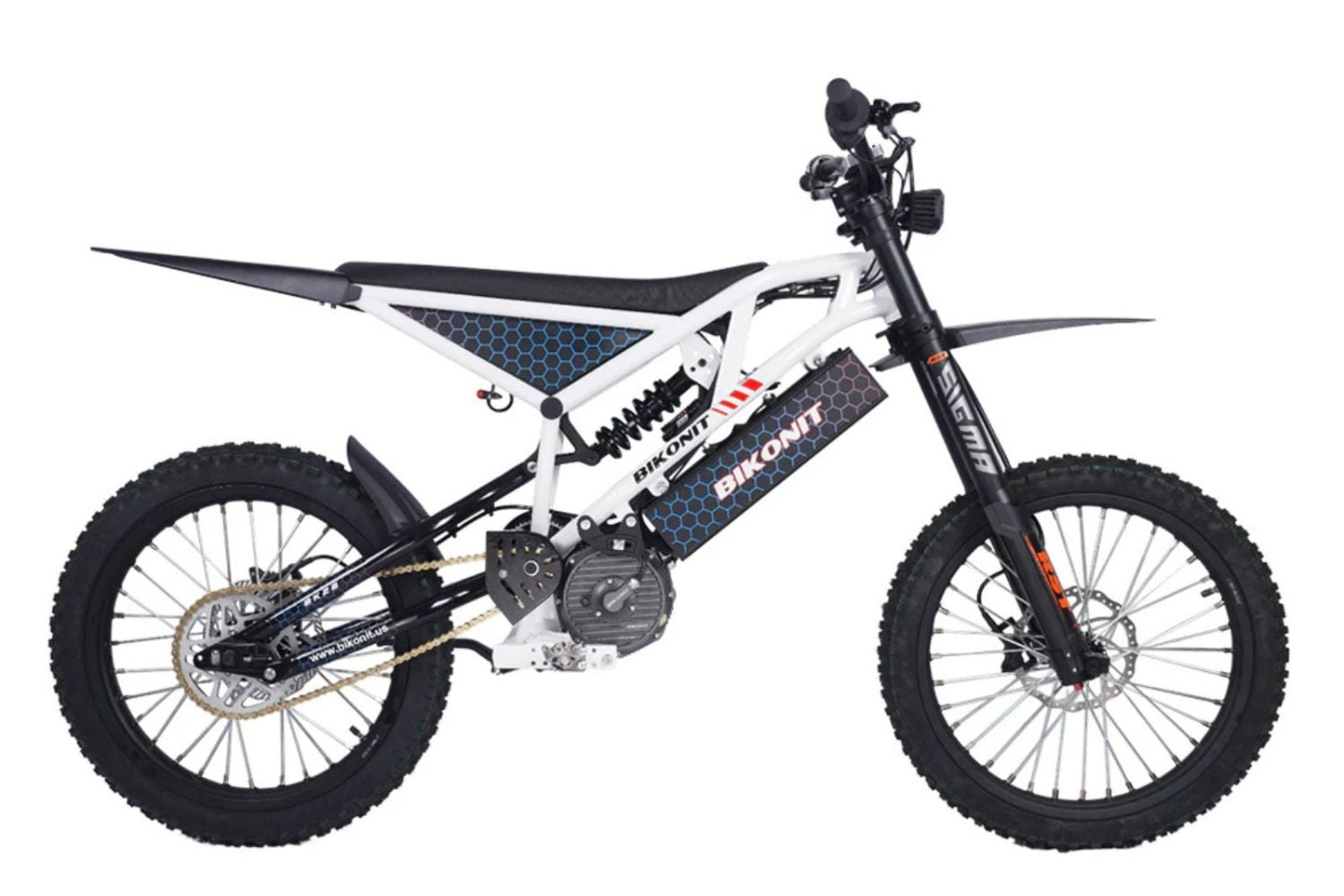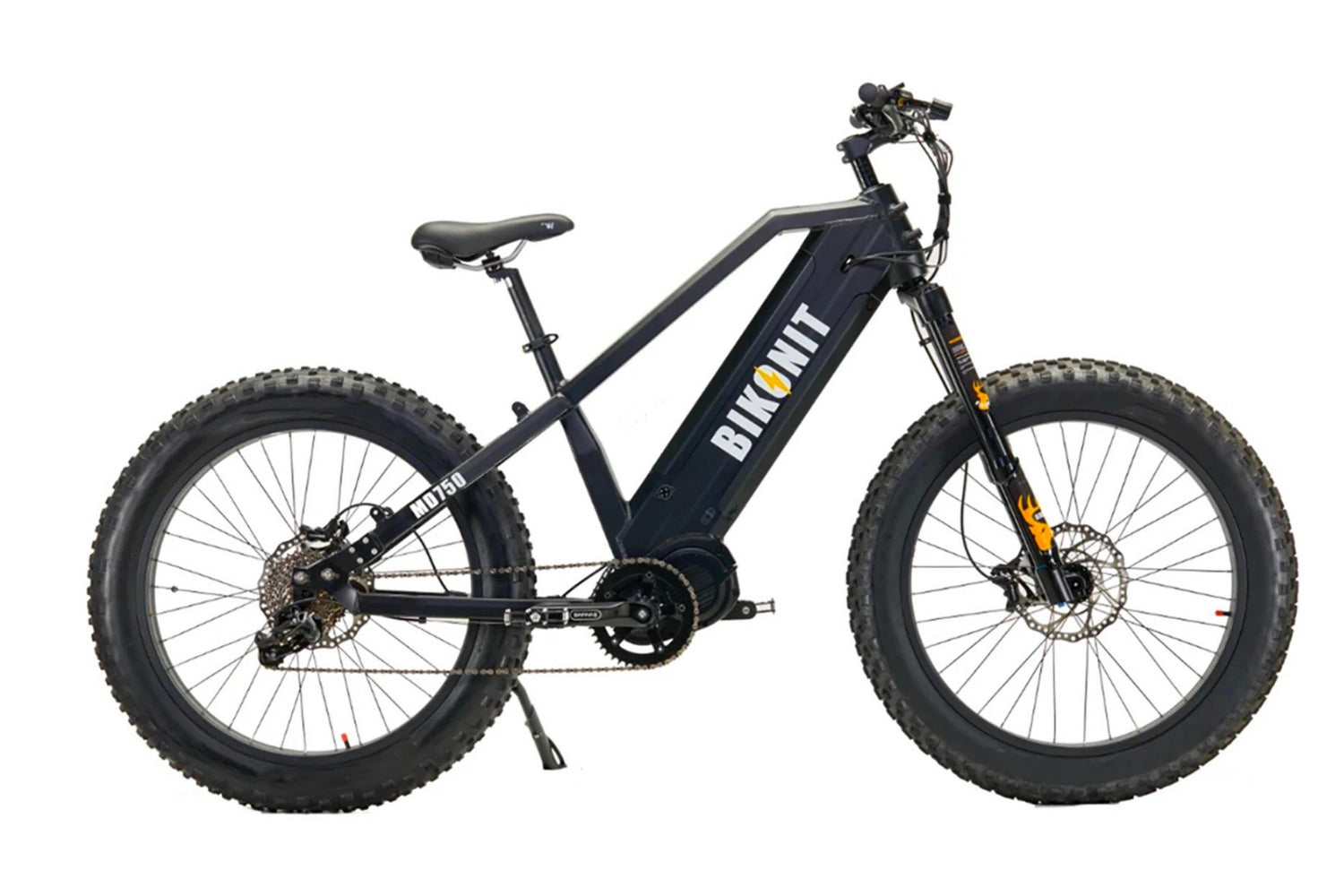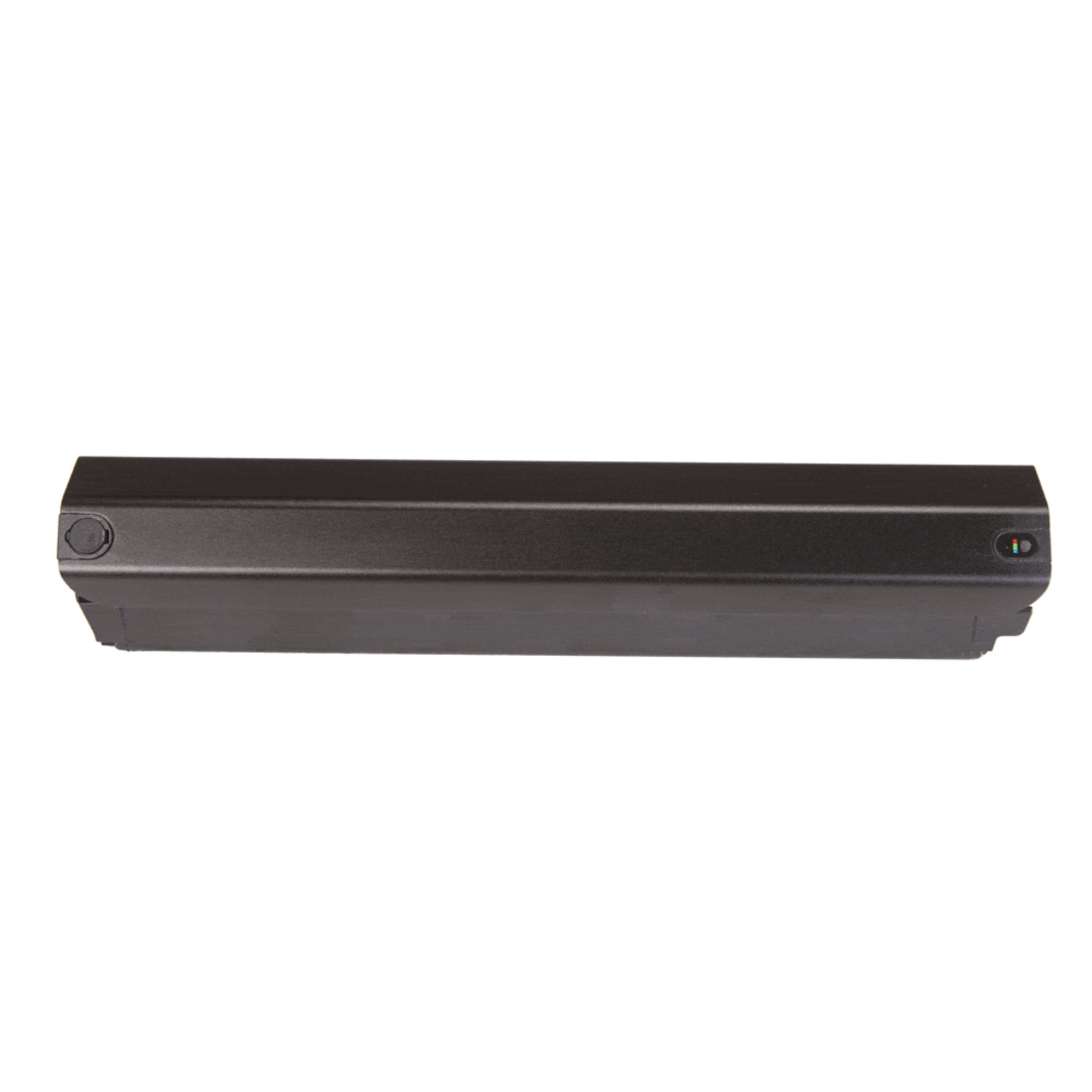
What are hardtail and full suspension ebikes?
- Hardtail electric bikes include a suspension fork up front but no rear suspension – giving them an extremely rigid, unsuspended back frame. Thus the term hardtail. Known for their lighter weight and lower price point, hardtail bikes are a popular choice for new off-roaders.
- Full suspension(FullSus) electric bikes boast both a suspension fork up front and a suspended rear wheel. They can also be known as dual-suspension mountain bikes. The addition of a rear shock makes these bikes more efficient and comfier to ride on difficult off-road terrain. The rear shock also improves the bike's traction and control, resulting in more rider comfort. This does not necessarily mean that full suspension bikes feature better suspension and shocks, as it comes down to a question of versatility.
Difference between hardtail and full suspension ebikes
- Weight
Without the added weight of pivots, a rear shock and suspension linkages, a hardtail mountain bike is usually at least a kilo lighter than its full suspension counterpart. In terms of climbing efficiency, this can mean a lot…however, when it comes to electric mountain bikes, a heavier weight doesn’t need to be a deal-breaker. With a powerful motor giving you a boost, you can still tackle those steep inclines on a full suspension Haibike e-bike without that penalty!
- Versatility
a rigid hardtail frame was the more versatile option thanks to very little loss of energy on the road, and a more direct feel in terms of power delivery through the drivetrain and wheels into the ground. Due to modern suspension design, the loss of energy you get on a full suspension bike is barely noticeable. And of course, with a Yamaha or Bosch motor thrown in, that previous loss is negated by electrical assistance.
- Terrain
Another thing to consider when choosing your mountain bike is where exactly you’re going to be riding it. Although both hardtail and full suspension bikes can tackle a wide variety of difficult terrain, your ride will feel different depending on which bike you choose.
Because of its rear shock, full suspension ebike feel a lot smoother to ride on technical terrain. If you’re looking for a bike that’ll take you as far off the beaten track as you can go, a full suspension electric bike might be your best bet. They can also be a good choice for beginners, with the rear suspension helping to absorb a lot of the expected off-road vibration, lessening rider fatigue meaning you can keep up with more experienced riders.
Without that added suspension in the rear, hardtail ebike can give you a bumpier ride – but that isn’t necessarily a bad thing. You can hit the same trails as you can with a full-suspension bike, but you’ll need to be more considerate of line choice, avoiding those rockier and rootier sections of trail where possible!
- Speed
With a lighter frame and fixed riding position, it’s easy to assume that hardtails are the fastest option for less technical mountain biking. And in the case of none electric bikes, that’s arguably true. On smoother trails, hardtail bikes are by far the more battery efficient bike. Aside from their light weight, hardtails also have a more direct connection to the ground, meaning you won’t lose any power as you pedal. Because of this, hardtails are the most popular mountain bike for cross-country racing – helping you fly across a whole host of different terrain at maximum speed.
But when you hit that really technical terrain, full suspension bikes are, of course, the faster choice. Despite their heavier weight, the added suspension helps you plow through the toughest trails with complete confidence, meaning you don’t need to spend as much time navigating obstacles, picking your line of choice, and keeping your balance. If you’re looking for something that’ll plough through gnarly trails with minimal effort, then a full suspension bike is still your best option.
- Maintenence
One advantage of hardtails is how easy they are to maintain. Just like none electric bikes, the most important thing is regular cleaning and lubricating. The added complexity of a full suspension frame means those extra components such as the rear shock and pivots will need servicing on top of your normal bike maintenance.
So, Which is your best choice?
When you’re deciding between a hardtail and a full suspension ebike, there is no ‘better’ or ‘worse’ option. But what you can find is the bike that’s best for your specific needs as a rider – whether you’re a seasoned rider or a complete beginner.
So, it all comes down to - what kind of rider are and where do you want to ride.




